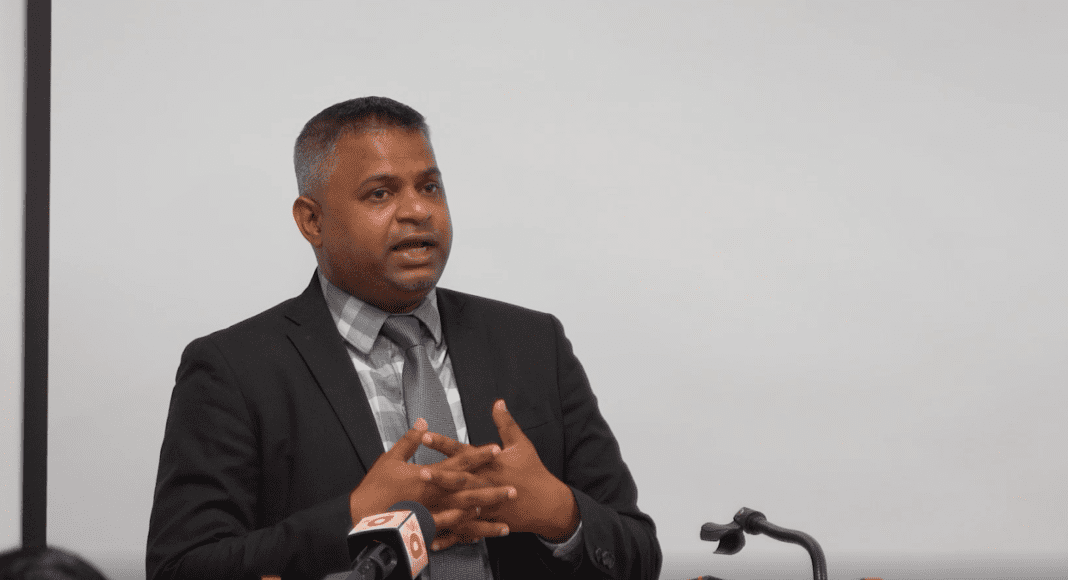Guyana’s Minister within the Ministry of Public Works, Deodat Indar, said on Thursday the 75% cost recovery ceiling for operations at the Stabroek Block provides local suppliers with an opportunity to maximise benefits from the rapidly expanding exploration and production activities offshore.
“With the current construct of the ExxonMobil contract, 75 percent of the money spent in any calendar year is cap on it for cost oil. How do you benefit from that?” Indar asked those gathered at the launch of the Guyana Oil & Gas Energy’s Chamber (GOGEC) training centre, adding, “That is where the local content element comes in.”
He pointed out that the 75% cost recovery translates to significant sums which the local private sector can tap into.
“That is money that is spent in the private sector, and what you have to understand is that means that is a lot of money,” Indar said.
During the launch of the training centre, Indar was also keen to inform the local energy chamber’s President, Manniram Prashad, that the government is assessing the needs of the industry. In this regard, he said it is getting ready to mandate that quota be carved out exclusively for locals in the oil and gas sector.
But even as the government does this, Indar said the local private sector should conduct its own assessments if it is to achieve maximum penetration of the industry.
His sentiment is one that has been echoed on previous occasions by Trinidad and Tobago’s Energy Strategist, Anthony Paul. Like Indar, the consultant has stressed over the years that Guyana could make the Stabroek Block PSA work to its benefit if it, for example, harnesses the local content opportunities that lie ahead. To gain maximum benefits however, Paul has advised local businesses to form partnerships.
The Trinidadian stressed that partnerships allow locals the opportunity to have a deeper understanding of different aspects of the oil and gas industry.
Paul has noted that given Guyana’s model, for every barrel of oil sold, 75 percent of that money goes to cover costs incurred for hiring subcontractors for the development of the oil projects.
“Now imagine if you were able to retain 10 percent of that 75, that would be significant. And you can retain that through partnerships,” said Paul while adding, “At the end of the day, the question before Guyana is, to what extent does it want to retain value from the oil industry?”




